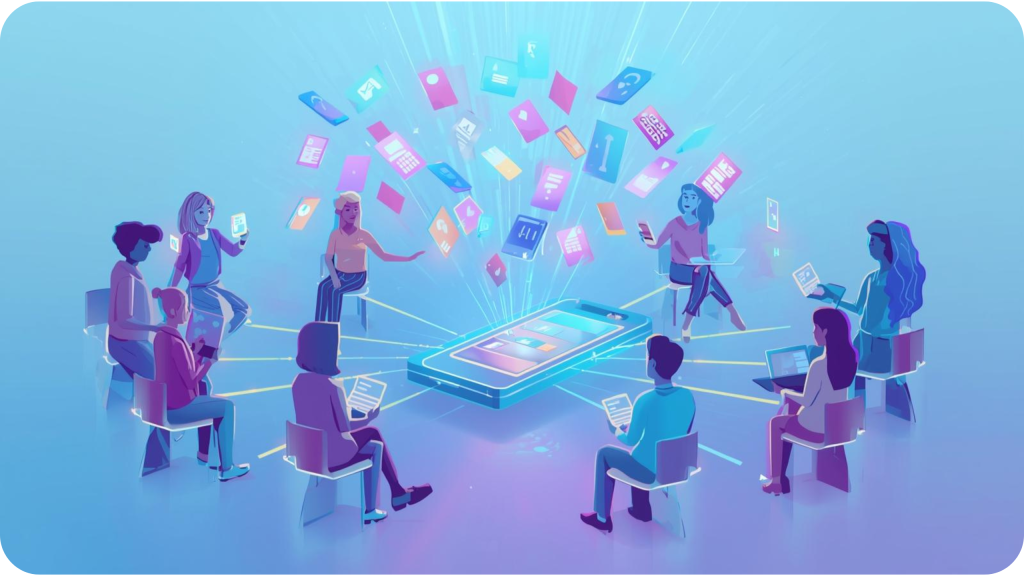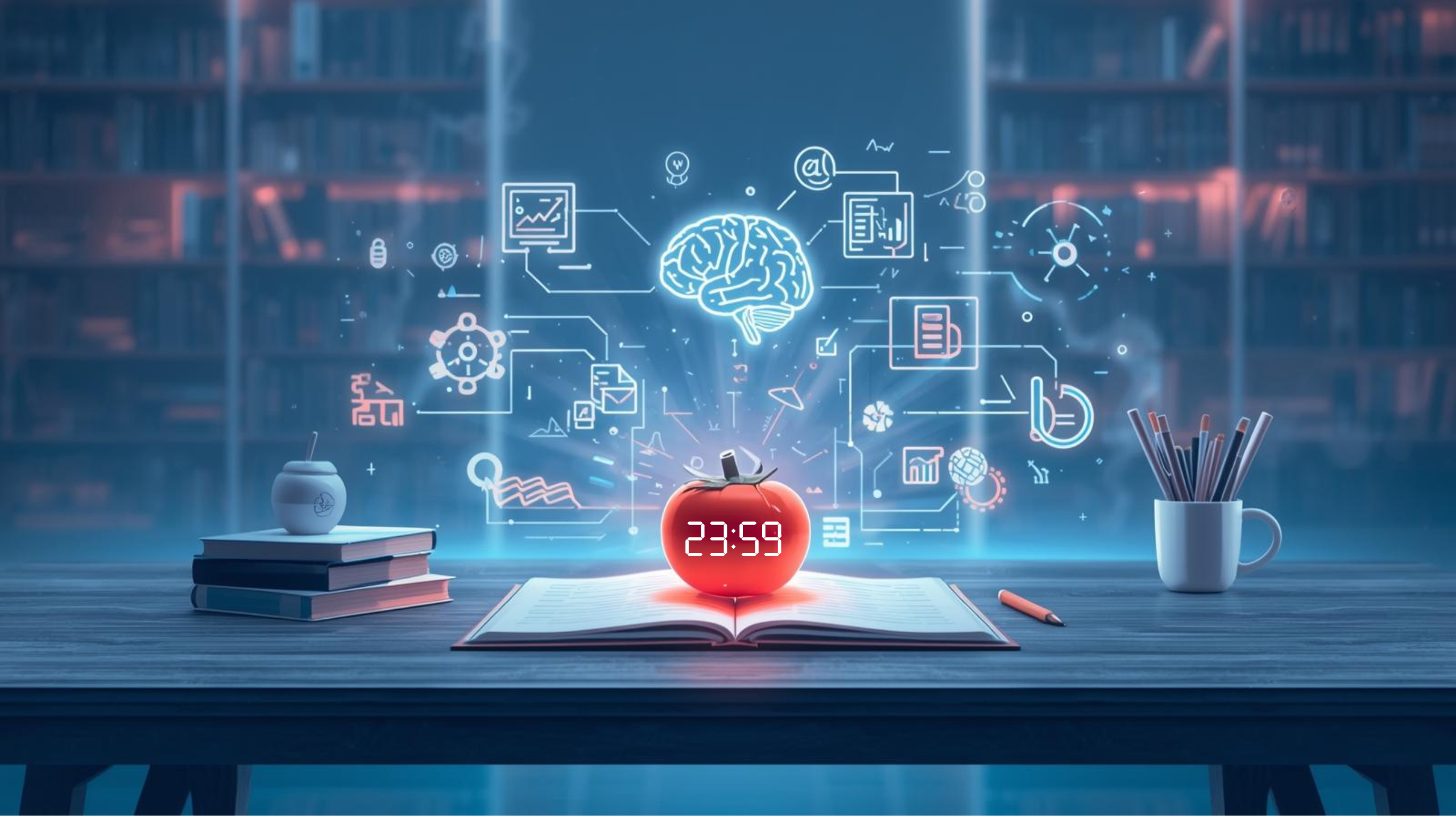Let’s be honest. You know the drill. You sit down with a towering textbook, a rainbow of highlighters, and the best intentions. You plow through chapters, painting the pages in fluorescent yellow and pink. You feel productive. You’ve “covered” the material. But fast forward to exam day, and your mind draws a frustrating blank. The information you spent hours “consuming” has vanished without a trace.
This, my friend, is the grand illusion of passive learning. It feels like work, but it’s merely the appearance of work. Your brain is a passive spectator, watching information parade by without ever engaging with it. But what if you could flip a switch? What if you could transform your study sessions from a forgettable monologue into an unforgettable, interactive dialogue with the material?
The answer lies in a fundamental shift: moving from a passive consumer of information to an active creator of knowledge. And the most powerful, versatile, and scientifically-backed tool to make this shift is the art and science of creating your own flashcards.
The Flaw in Our Study System: Passive Consumption and Its Pitfalls
Our traditional education model often trains us to be excellent consumers. We are taught to listen, to read, to absorb. The metrics of success—highlighting, underlining, re-reading—are all passive activities. They create a false sense of fluency; because the material is familiar when you see it, you mistake that familiarity for mastery.
Science explains this through the Ebbinghaus Forgetting Curve, which demonstrates that we forget over 50% of new information within an hour if we don’t make a conscious effort to retain it. Passive review does little to combat this curve.
The Passive Learner:
- Rereads notes and textbooks.
- Highlights passages.
- Believes they know the material because it looks familiar.
- Is often blindsided by exam questions that require application.
The Active Creator:
- Engages with the material by questioning it.
- Processes information to distill its essence.
- Knows they know the material because they can recall and apply it without prompts.
- Enters exams with confidence, ready to tackle any question.

The Creator’s Mindset: How Building Knowledge Beats Consuming It
Imagine the difference between taking a guided tour of a city and being the city’s architect. The tourist sees the finished buildings and streets. The architect understands the foundation, the wiring, the plumbing, and the purpose of every single element. They didn’t just see the city; they built it.
When you create a flashcard, you are that architect. You aren’t just copying a fact; you are deconstructing a concept and rebuilding it in a way that your brain can truly own. This process, known as metacognition (thinking about your own thinking), is where deep, durable learning occurs.
The Cognitive Alchemy of Flashcard Creation
Creating a single, high-quality flashcard is a three-layered alchemical process that transforms inert information into personal knowledge:
-
The Layer of Critical Filtering: Your brain is forced to ask: “What is the absolute core idea here? What is the signal, and what is the noise?” This act of discrimination is the first and most crucial step in learning. It moves you from memorizing everything to understanding what truly matters.
-
The Layer of Synthesis and Formulation: This is the magic. You can’t just copy-paste a sentence from the textbook. You have to digest the concept and regurgitate it in your own words. You might connect it to a personal anecdote, a funny image, or a relatable analogy. This process of elaboration creates multiple neural pathways to the same information, making it incredibly difficult to forget.
-
The Layer of Organization and Connection: As you build a deck of flashcards, you naturally start to see patterns and relationships. You create cards that link Concept A to Concept B. You group related ideas, building a structured web of knowledge rather than a pile of disjointed facts. This mimics how your brain naturally stores information—in interconnected networks.

Beyond the Card: Supercharging Your Flashcards with StudyWizardry
Anyone can write on a piece of paper. But the true power of flashcards is unleashed when you combine the ancient wisdom of active recall with modern cognitive science. This is where StudyWizardry transforms a simple tool into a personalized learning powerhouse.
StudyWizardry doesn’t just give you a digital notepad. It gives you an intelligent learning companion.
-
The Spaced Repetition System (SRS): The Anti-Forgetting Algorithm
This is the game-changer. Your brain forgets on a curve, but SRS fights back. After you create a flashcard, StudyWizardry’s algorithm tracks your performance. When you rate a card, it schedules the next review further in the future. When you struggle with a card, it brings it back more frequently. This ensures you review information right before you are about to forget it, cementing it into your long-term memory with stunning efficiency. You focus on the creative work of building knowledge; StudyWizardry handles the precise science of locking it in.
-
Multi-Modal Mastery: Learn, Test, Study
Not all review sessions are created equal. StudyWizardry offers three distinct modes to strengthen different aspects of your memory:
-
Learn Mode: Your bootcamp for new cards. It presents information in various formats until you achieve initial mastery, building a strong foundation.
-
Test Mode: The pressure simulator. This mode mimics exam conditions, forcing you to recall information quickly and accurately, building speed and confidence.
-
Study Mode: The long-term consolidation tool. This mode allows for a calm, comprehensive review of your entire deck, reinforcing the knowledge in your long-term storage.
-
The Collaborative Ecosystem
Learning isn’t always a solo mission. With StudyWizardry, you can share your meticulously crafted flashcard decks with classmates or discover decks created by other students. This allows you to see how others distill complex topics, giving you new perspectives and filling gaps in your own understanding. It’s social learning, supercharged.

The “Generation Effect”: The Scientific Proof That Your Work Matters
Perhaps the most compelling reason to create your own flashcards is a robust psychological phenomenon known as the “Generation Effect.” Simply put, we remember information we generate ourselves far better than information we simply receive.
A pre-made flashcard deck, no matter how well-designed, robs you of this critical benefit. The act of writing the question and formulating the answer is, in itself, a powerful and efficient study session. When you use a pre-made deck, you start at a disadvantage. When you create your own, you’re already halfway to mastery before you even start the official “review” process.
From Theory to Practice: Your Blueprint for Building Master-Level Flashcards
Ditch the “Term – Definition” model. To truly harness the power of active learning, your flashcards must force you to think, not just recognize. Here’s how to craft them:
-
The Application Card: Move beyond definitions.
- Bad: “What is Newton’s First Law?”
- Great: “A hockey puck is sliding at a constant speed across a frictionless ice rink. Explain its motion using Newton’s First Law.”
-
The Comparison Card: Force connections.
-
The “Fill-in-the-Blanks” Card: Ideal for processes, sequences, and formulas.
-
The Image-Based Card: Harness visual memory.
-
The “Explain-Why” Card: Dive into reasoning.
A Creator’s Journey: From Overwhelmed to In Command
Maria, a pre-med student, was drowning in the complexity of human anatomy. The Latin names, the systems, the connections—it was an ocean of facts. She spent nights passively scrolling through 3D models and re-reading her textbook, with little to show for it. Her turning point was committing to creating her own flashcards in StudyWizardry. For each muscle, she didn’t just write the name. She created:
- An Application Card asking about its function in a specific movement.
- An Image Card with a diagram for location.
- A Comparison Card comparing it to an antagonist muscle.
“The act of creating the cards forced me to understand the ‘why’ behind everything,” Maria says. “It was slower at first, but by the time my deck was finished, I had already learned more than in all my previous passive sessions combined. The Spaced Repetition system then made sure I never forgot it. I didn’t just memorize anatomy; I understood it.”
Overcoming the Hurdles: A Creator’s Guide to Common Challenges
“It takes too much time!” This is the most common objection, but it’s a misunderstanding of ROI (Return on Investment). An hour of active creation is worth three hours of passive rereading. You are trading more time upfront for dramatically less time relearning later. It’s the difference between building a sturdy bridge once versus constantly repairing a rickety one.
“I don’t know if my flashcards are any good.” Quality improves with practice. Start by using the frameworks above. Share a few cards with a study partner or your professor for feedback. The very act of questioning your card’s quality is a metacognitive process that makes you a better learner.
“How do I handle complex, conceptual subjects?” Break them down. A complex theory isn’t one flashcard; it’s a series of interconnected cards that build upon one another. Create a “Foundation” card for the core idea, then “Application” cards for examples, and “Connection” cards for how it relates to other theories.
The Future is Creation: Join the Learning Revolution
The era of the passive student is over. The future of education belongs to the creators, the architects, the active participants who take control of their cognitive journey.
By embracing the practice of creating your own flashcards, you are not just studying for your next test. You are building a fundamental skill: the ability to learn how to learn. You are training your brain to engage deeply, think critically, and retain knowledge for the long haul.
Don’t just consume your education. Create it.
Your first mission: Open StudyWizardry today. Pick one single topic you’ve been struggling with. Don’t aim for perfection. Just create 10 flashcards using one of the advanced methods above. Then, run a single Learn Mode session. Feel the difference. That’s the sound of the switch flipping. Welcome to the revolution.







